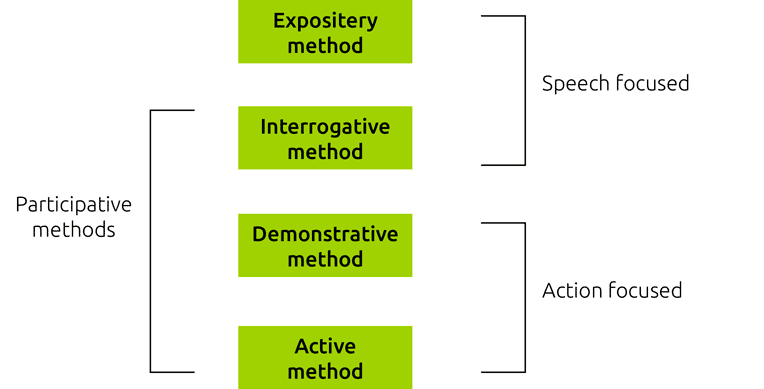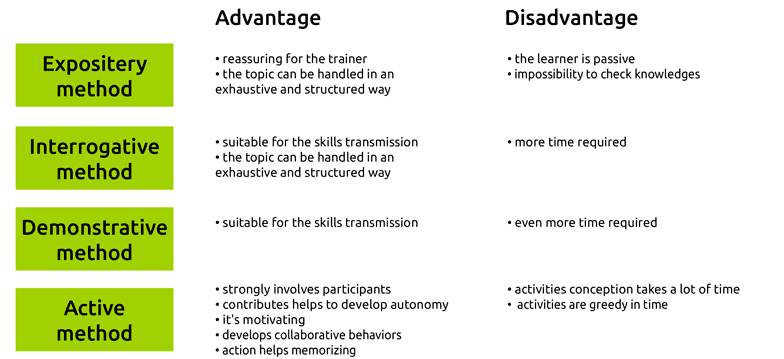2. Analysis of information
It's about being in proposal forces by translating the identified training needs into training objectives, available in conveyable content (knowledge) and in means to do it (methods).Choice of objectives
To start the conception of a training session correctly, one must be sure to have a sharp and correctly stated training objective.The objective is important because it is :
- a contract: towards trainees, towards the sponsor.
- a safeguard: against a great quantity of information. Thecriteria is simple : why saying or doing this will help people to achieve their goal ?
To start with, the major objectives of the training session must be clarified (session). They can be formulated with the sentence : "When the session is over, the trainee must be able to ... "
Afterwards, this objective must be divided into sub-objectives linkable to the different sequences of the session... (three domains must be covered : knowledge, know-how, manners).
The last stage is about hierarchizing these sub-objectives, specifying those which maybe deleted if time is short.
useful to know :
Objectives are expressed in verbs.
The SMART diagram enables to check quickly the quality of objectives. A good objective is :
- Specific
- Measurable
- reachable
- Realistic
- Temporally defined
Choice of content
From objectives, content and sequences get more precise. Knowledge have to be worked out : concepts, information, examples, activities...All the things needed by the trainee to get the pointed out skills.
Methods
Knowing how to choose educational methods means to know how to be educational.The method defines the transmission mode for the trainer and the acquisition mode for the trainee. There are 4 great educational methods:

Advantages and drawbacks of the different educational methods

Evaluation indicators
The last point of educational analysis of information. It's about pointing out criteria which allows to say that a goal is reached.It's a teadous work but it's important to start it as soon as the training session is designed.